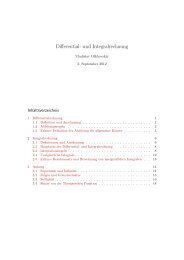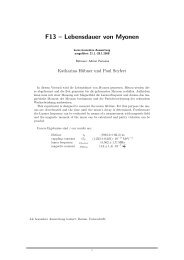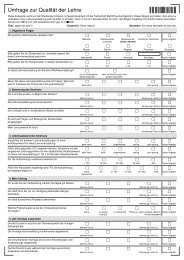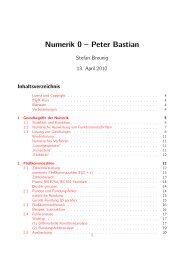Extrasolar Moons as Gravitational Microlenses Christine Liebig
Extrasolar Moons as Gravitational Microlenses Christine Liebig
Extrasolar Moons as Gravitational Microlenses Christine Liebig
You also want an ePaper? Increase the reach of your titles
YUMPU automatically turns print PDFs into web optimized ePapers that Google loves.
CHAPTER 4. CHOICE OF SCENARIOS 33<br />
Both examples are singular in the solar system, but we argue that more m<strong>as</strong>sive<br />
moons are the more interesting ones anyway. A more m<strong>as</strong>sive moon can effectively<br />
stabilise the obliquity of a planet, which is thought to be favouring the habitability<br />
of the planet (Benn, 2001). The next highest m<strong>as</strong>s ratio found in the solar system<br />
is two orders of magnitude smaller: qMP = MTriton<br />
MNeptune = 2 × 10−4 . At the low m<strong>as</strong>s<br />
end of our analysis we examine qMP = 10 −3 . See figure 4.3 for the three m<strong>as</strong>s ratios<br />
that we adopt.<br />
There are analogies to the planet-star m<strong>as</strong>s ratio. A higher value of the lunar<br />
m<strong>as</strong>s ratio leads to a higher deflection of light rays by the moon, and will produce a<br />
larger sized lunar caustic. Consequently, the lunar caustic will cover a larger fraction<br />
of the planetary caustic and be noticeable in a larger fraction of source trajectories.<br />
One of our requirements is that the planet h<strong>as</strong> already been detected with a caustic<br />
crossing. It is just spelling out common sense to state that the probability to discover<br />
a m<strong>as</strong>sive moon next to an already discovered planet is higher than to find a less<br />
m<strong>as</strong>sive natural satellite of the planet.<br />
(a) qMP = 10 −3 (b) qMP = 10 −2 (c) qMP = 10 −1<br />
Figure 4.3: The moon m<strong>as</strong>s determines the size and strength of the lunar caustic,<br />
on which we have zoomed in. From left to right the lunar m<strong>as</strong>s ratio is incre<strong>as</strong>ed<br />
from qMP = 10 −3 to 10 −1 , all other parameters remain constant. Distinctly different<br />
caustic topologies are induced by the interference of lunar and planetary caustic.<br />
4.1.3 Angular separation of planet and star<br />
The angular separation dP S of a binary of star and planet will evoke a certain<br />
topology of caustics, see figure 4.4. They gradually evolve from the close separation<br />
c<strong>as</strong>e with two small triangular caustics on the far side of the star and a small central<br />
caustic at the star position, to a large central caustic for the intermediate c<strong>as</strong>e, when<br />
the planet is situated near the stellar Einstein ring, dP S = θE. If the planet is moved<br />
further out, one obtains a small central caustic and a larger isolated, diamond-shaped<br />
planetary caustic (figure 4.5(b)) that is very <strong>as</strong>ymmetric and elongated towards the<br />
primary m<strong>as</strong>s in the beginning, but becomes more and more symmetric if the planet<br />
is placed further outwards (figure 4.5(c)).










